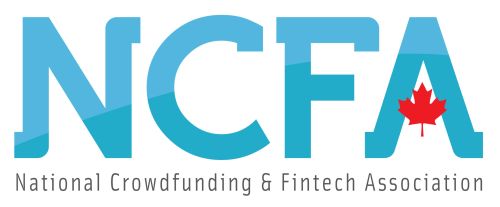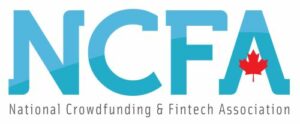Digital platforms have become central to our social, economic, and political lives, the call for effective regulation has never been more pressing
Chatham House's recent publication, "Towards a Global Approach to Digital Platform Regulation," sheds light on this complex issue, offering valuable insights for policymakers, industry leaders, and stakeholders.
Governments worldwide are increasingly recognizing the need to regulate digital platforms. The research conducted by Chatham House is extensive, reviewing 55 laws and legislative proposals from around the world as of October 2022. The report highlights a striking diversity in regulatory approaches. From the EU's values-based lawmaking to China's comprehensive digital technology offerings, no single model has yet emerged as a global standard. This diversity poses a risk of entrenched fragmentation, potentially leading to a patchwork of internet regulations that vary significantly across borders.
5 Main Regulatory Approaches
This analysis reveals five notable regulatory approaches: strict custody, independent regulation, user rights and capacities, extensive platform monitoring, and data localization in content moderation. These trends reflect the varied strategies nations are employing to govern digital platforms, each with its own set of implications for users, companies, and governments.
1. Strict Custody
- This approach involves stringent government control over digital platforms. It often manifests in rigorous content control, heavy censorship, and strict compliance requirements for platforms. Countries adopting this model prioritize national security and social stability, sometimes at the expense of individual freedoms and open internet principles. The challenge here is balancing state control with the dynamic nature of digital content and user interaction.
- Examples: China, South Korea, Singapore, New Zealand, Philippines
See: G20’s Vision for Financial Inclusion through Digital Public Infrastructure
2. Independent Regulation
- Independent regulation refers to the establishment of autonomous bodies to oversee digital platforms. These entities operate separately from government influence, ensuring a degree of impartiality in regulation. This model aims to create a fair and transparent regulatory environment, where decisions are made based on established guidelines rather than political motives. The effectiveness of this approach hinges on the independence and expertise of the regulatory bodies.
- Examples: UK, Canada, European Union, Australia, France
3. User Rights and Capacities
- Emphasizing user empowerment, this approach focuses on enhancing users' rights and abilities to manage their digital experiences. It includes mechanisms for user feedback, content control options, and transparency in platform operations. This trend reflects a shift towards user-centric regulation, recognizing the importance of individual agency in the digital realm.
- Examples: UK, Canada, European Union, Australia, France, China, Russia, Indonesia
4. Extensive Platform Monitoring
- In this model, there is a significant emphasis on continuous monitoring of platform activities. It involves close scrutiny of content, user behavior, and platform algorithms. The goal is to preemptively identify and mitigate potential harms, ranging from misinformation to illegal activities. While this approach can be effective in safeguarding users, it raises concerns about privacy and the potential for overreach.
- Examples: China, Russia, South Korea, Iran, Belarus
5. Data Localization in Content Moderation
- Data localization mandates that digital platforms store and process data within the borders of the regulating country. This approach is often integrated with content moderation policies. The rationale behind data localization is to exert greater control over digital information and enhance the enforceability of local laws. While it aims to protect national interests and user data, this approach can lead to challenges in global interoperability and may impose significant costs on platforms.
- Examples: Vietnam, Russia, Turkey, Pakistan, Iran
Shaping Global Norms Towards A Harmonized Apporach
The United States continues to be a dominant force in shaping global digital norms, largely through its technology provision. In contrast, the European Union plays a critical role as a counterbalance, focusing on regulation that reflects its values and principles. The report underscores the EU's leadership in translating policy priorities into actionable laws. However, it also points out the challenges in converting these laws into technical standards, an area where China excels with its 'full stack' digital solutions.
See: CFPB Eyes Digital Payment Regulation for Big Tech
The report suggests leveraging the established and universal principles of human rights as a framework for global regulatory approaches. This approach, however, is not a complete solution and needs to be supplemented with measures to preserve an open, global internet, tackle national divergence on platform regulation, and strengthen international digital cooperation.
The document details the fragmentation in governance of digital platforms, emphasizing the need for coordination and interoperability to strengthen states' ability to manage corporate power and reduce compliance burdens on the industry.
The Chatham House report underscores the need for a harmonized approach to digital platform regulation. While each model has its merits and drawbacks, a global framework that incorporates the best elements of each could lead to more effective and equitable digital governance. Such a framework would ideally respect national sovereignty while upholding universal principles like freedom of expression, privacy, and open access.
Report Recommendations
Looking ahead, the report discusses potential pathways for the future of platform regulation, focusing on major digital centers such as the EU, China, the UK, and the US. It highlights the importance of establishing global frameworks that incorporate human rights considerations while striving for alignment on platform regulation principles and working diligently to preserve the open, global nature of the internet.
1. Enhance International Collaboration and Shared Understanding
- Create a common language for platform regulation, focusing on security and user protection.
- Strengthen global networks of regulators for sharing expertise and aligning regulatory practices.
- Support collaboration and transparency among regulatory bodies to ensure consistent rules and technologies.
2. Adopt a Human Rights-Centric Approach for Regulation
- Ensure laws and platform policies for online content are clear, fair, and respect human rights.
- Move beyond simple content removal to include diverse strategies like labeling harmful content.
- Concentrate on the overall impact and processes of platforms, rather than just focusing on individual content pieces.
3. Invest in Global Standards and Software Cooperation
- Actively participate in international internet governance and maintain neutrality in standards bodies.
- Increase funding and support for technology projects that meet shared global needs.
- Strengthen international partnerships for developing technology and digital regulations.
Conclusion
As digital platforms continue to evolve and exert influence over various aspects of our lives, the need for thoughtful, effective, and harmonized regulation becomes increasingly crucial. Stakeholders across the spectrum, from governments to tech companies, must engage in this dialogue, ensuring that the digital future is secure, equitable, and respects the fundamental rights of all individuals.
See: Canada to Launch ‘Digital Ambition 2022’ Public Consultation For Digital ID Framework of Federal Public Services
The National Crowdfunding & Fintech Association recognizes that the goal should be to create a regulatory framework that is adaptable, respects human rights, and fosters innovation while protecting users and societies from the potential harms of unregulated digital platforms. This balanced approach is essential for ensuring that the digital world remains a space for positive growth, open exchange, and the advancement of global digital cooperation.

 The National Crowdfunding & Fintech Association (NCFA Canada) is a financial innovation ecosystem that provides education, market intelligence, industry stewardship, networking and funding opportunities and services to thousands of community members and works closely with industry, government, partners and affiliates to create a vibrant and innovative fintech and funding industry in Canada. Decentralized and distributed, NCFA is engaged with global stakeholders and helps incubate projects and investment in fintech, alternative finance, crowdfunding, peer-to-peer finance, payments, digital assets and tokens, artificial intelligence, blockchain, cryptocurrency, regtech, and insurtech sectors. Join Canada's Fintech & Funding Community today FREE! Or become a contributing member and get perks. For more information, please visit: www.ncfacanada.org
The National Crowdfunding & Fintech Association (NCFA Canada) is a financial innovation ecosystem that provides education, market intelligence, industry stewardship, networking and funding opportunities and services to thousands of community members and works closely with industry, government, partners and affiliates to create a vibrant and innovative fintech and funding industry in Canada. Decentralized and distributed, NCFA is engaged with global stakeholders and helps incubate projects and investment in fintech, alternative finance, crowdfunding, peer-to-peer finance, payments, digital assets and tokens, artificial intelligence, blockchain, cryptocurrency, regtech, and insurtech sectors. Join Canada's Fintech & Funding Community today FREE! Or become a contributing member and get perks. For more information, please visit: www.ncfacanada.org - SEO Powered Content & PR Distribution. Get Amplified Today.
- PlatoData.Network Vertical Generative Ai. Empower Yourself. Access Here.
- PlatoAiStream. Web3 Intelligence. Knowledge Amplified. Access Here.
- PlatoESG. Carbon, CleanTech, Energy, Environment, Solar, Waste Management. Access Here.
- PlatoHealth. Biotech and Clinical Trials Intelligence. Access Here.
- Source: https://ncfacanada.org/chatham-house-global-digital-platform-regulation-insights/
- :has
- :is
- :not
- :where
- 150
- 2018
- a
- abilities
- ability
- About
- access
- across
- activities
- adopt
- Adopting
- advancement
- affiliates
- agency
- ahead
- aims
- algorithms
- aligning
- alignment
- All
- also
- alternative
- alternative finance
- ambition
- among
- an
- analysis
- and
- approach
- approaches
- ARE
- AREA
- around
- artificial
- artificial intelligence
- AS
- aspects
- Assets
- Association
- At
- Australia
- autonomous
- Balanced
- balancing
- based
- BE
- become
- becomes
- been
- behavior
- behind
- BEST
- Beyond
- Big
- big tech
- blockchain
- bodies
- borders
- by
- cache
- call
- CAN
- Canada
- capacities
- Censorship
- Centers
- central
- CFPB
- challenge
- challenges
- China
- clear
- Close
- closely
- collaboration
- Common
- community
- Companies
- complete
- complex
- compliance
- comprehensive
- Concerns
- conducted
- considerations
- consistent
- consultation
- content
- content moderation
- continue
- continues
- continuous
- contrast
- control
- converting
- cooperation
- coordination
- Corporate
- Costs
- could
- countries
- country
- create
- critical
- Crowdfunding
- crucial
- cryptocurrency
- Custody
- data
- decentralized
- decisions
- Degree
- details
- developing
- dialogue
- digital
- Digital Assets
- Digital Content
- Digital ID
- Digital Payment
- digital platforms
- digital technology
- digital world
- diligently
- distributed
- Divergence
- diverse
- Diversity
- document
- dominant
- drawbacks
- dynamic
- each
- Economic
- ecosystem
- Education
- Effective
- effectiveness
- elements
- emerged
- emphasis
- emphasizing
- employing
- empowerment
- engage
- engaged
- enhance
- enhancing
- ensure
- ensuring
- entities
- entrenched
- Environment
- equitable
- essential
- established
- establishing
- establishment
- Ether (ETH)
- EU
- European
- european union
- evolve
- exchange
- Experiences
- expertise
- expression
- extensive
- Eyes
- fair
- Federal
- feedback
- finance
- financial
- financial inclusion
- financial innovation
- fintech
- five
- focuses
- focusing
- For
- Force
- fosters
- fragmentation
- Framework
- frameworks
- France
- Freedom
- freedoms
- from
- full
- Full Stack
- fundamental
- funding
- funding opportunities
- future
- get
- Global
- global digital
- goal
- govern
- governance
- Government
- Governments
- greater
- Growth
- guidelines
- harmful
- harms
- Have
- heavy
- helps
- here
- highlights
- hinges
- House
- However
- http
- HTTPS
- human
- human rights
- ID
- ideally
- identify
- Illegal
- Impact
- implications
- importance
- impose
- in
- include
- includes
- inclusion
- incorporate
- incorporates
- increasingly
- independence
- independent
- individual
- individuals
- industry
- influence
- information
- Infrastructure
- Innovation
- innovative
- insights
- Insurtech
- integrated
- Intelligence
- interaction
- interests
- International
- Internet
- Interoperability
- into
- Invest
- investment
- involves
- Iran
- issue
- IT
- ITS
- Jan
- jpg
- just
- korea
- labeling
- language
- largely
- launch
- Laws
- lead
- leaders
- Leadership
- leading
- Legislative
- leveraging
- light
- like
- Lives
- local
- Localization
- made
- Main
- maintain
- major
- manage
- mandates
- Market
- max-width
- May..
- measures
- mechanisms
- Meet
- member
- Members
- Misinformation
- Mitigate
- model
- moderation
- monitoring
- more
- must
- National
- national security
- Nations
- Nature
- Need
- needs
- networking
- networks
- neutrality
- never
- New
- New Zealand
- no
- norms
- notable
- october
- of
- offering
- Offerings
- often
- on
- online
- open
- operate
- Operations
- opportunities
- Options
- or
- our
- out
- over
- overall
- overreach
- oversee
- own
- Pakistan
- participate
- partners
- partnerships
- pathways
- payment
- payments
- peer to peer
- perks
- pieces
- platform
- Platforms
- plato
- Plato Data Intelligence
- PlatoData
- plays
- please
- points
- policies
- policy
- policymakers
- political
- poses
- positive
- potential
- potentially
- power
- practices
- principles
- Prioritize
- privacy
- process
- processes
- projects
- Proposals
- protect
- protecting
- protection
- provides
- provision
- public
- Publication
- raises
- ranging
- rather
- rationale
- realm
- recent
- recognizes
- recognizing
- reduce
- refers
- reflect
- reflects
- Regtech
- Regulate
- regulating
- Regulation
- regulations
- regulatory
- remains
- removal
- report
- Requirements
- research
- respect
- respects
- Reveals
- rights
- rigorous
- Risk
- Role
- rules
- Russia
- s
- safeguarding
- scrutiny
- Sectors
- secure
- security
- Services
- set
- shaping
- shared
- sharing
- shift
- should
- significant
- significantly
- Simple
- Singapore
- single
- Social
- Software
- solution
- sometimes
- South
- South Korea
- sovereignty
- Space
- Spectrum
- Stability
- stack
- stakeholders
- standard
- standards
- State
- state control
- States
- Stewardship
- store
- strategies
- Strengthen
- strict
- stringent
- striving
- such
- Suggests
- support
- tackle
- tech
- tech companies
- Technical
- Technologies
- Technology
- than
- that
- The
- The Future
- the UK
- the world
- their
- There.
- These
- this
- thousands
- Through
- to
- today
- Tokens
- towards
- Transparency
- transparent
- Trend
- Trends
- Turkey
- Uk
- underscores
- union
- Universal
- upholding
- us
- User
- user-centric
- users
- Valuable
- Values
- various
- vibrant
- Vietnam
- vision
- Visit
- while
- with
- within
- working
- works
- world
- worldwide
- would
- yet
- Zealand
- zephyrnet











